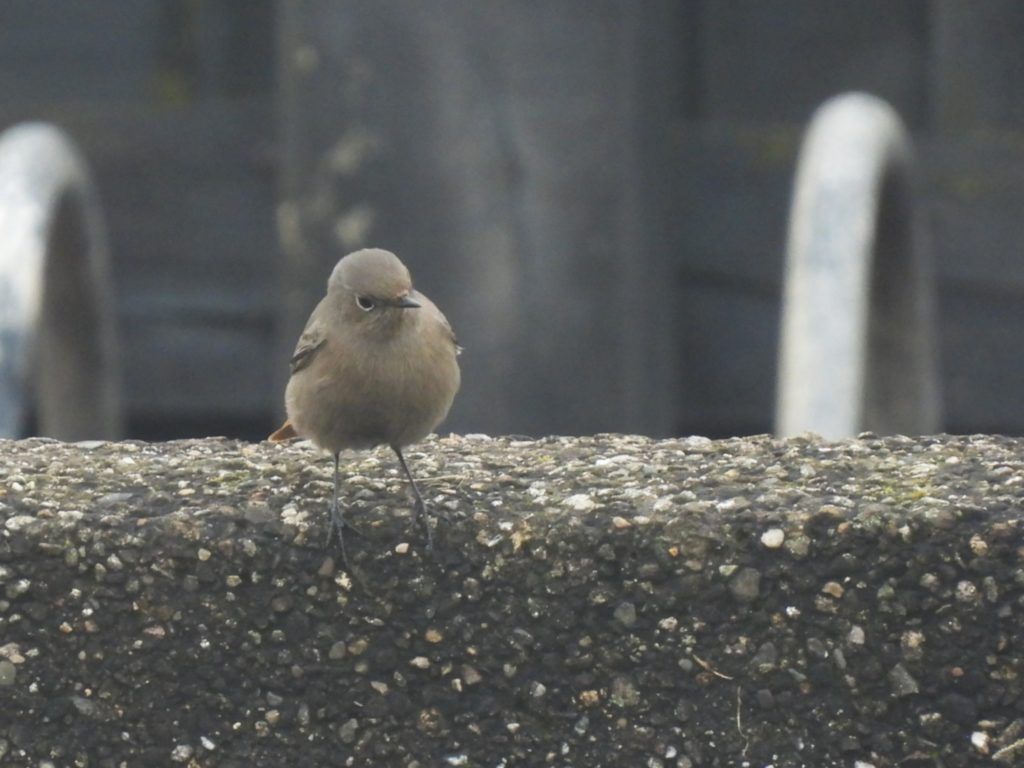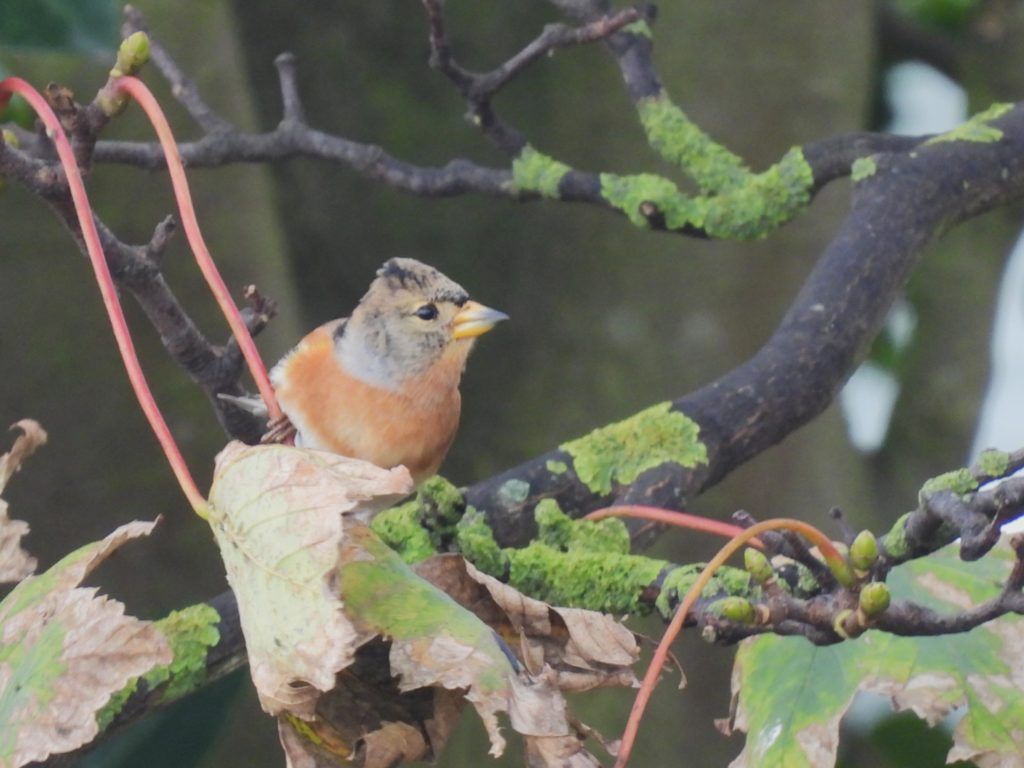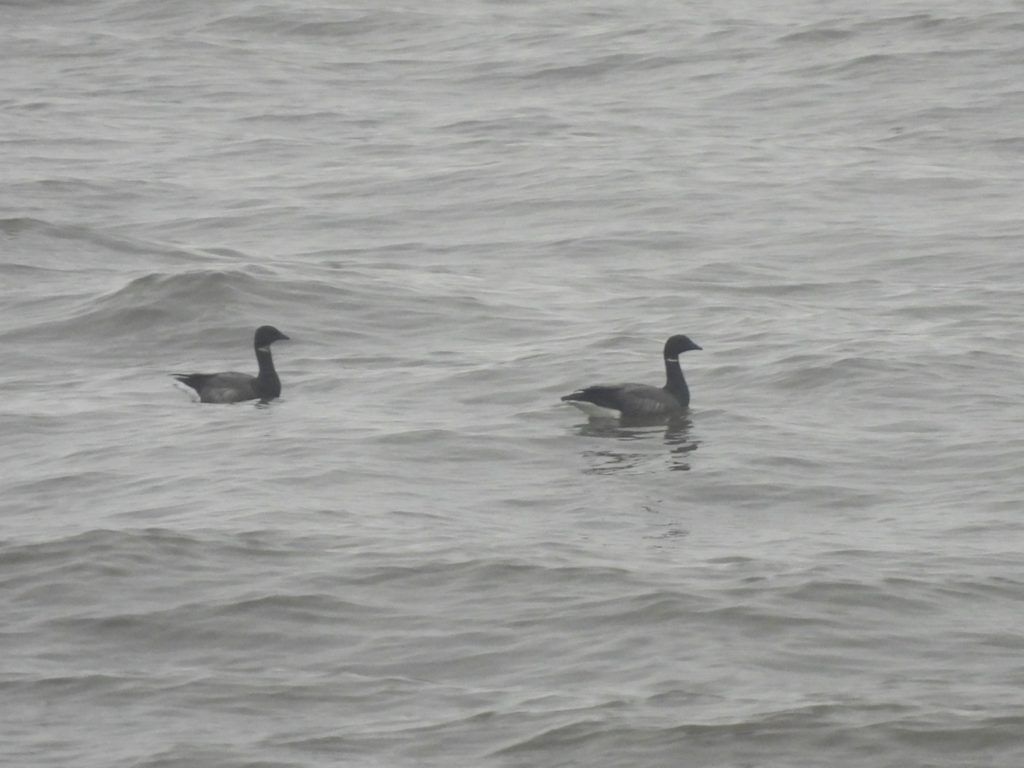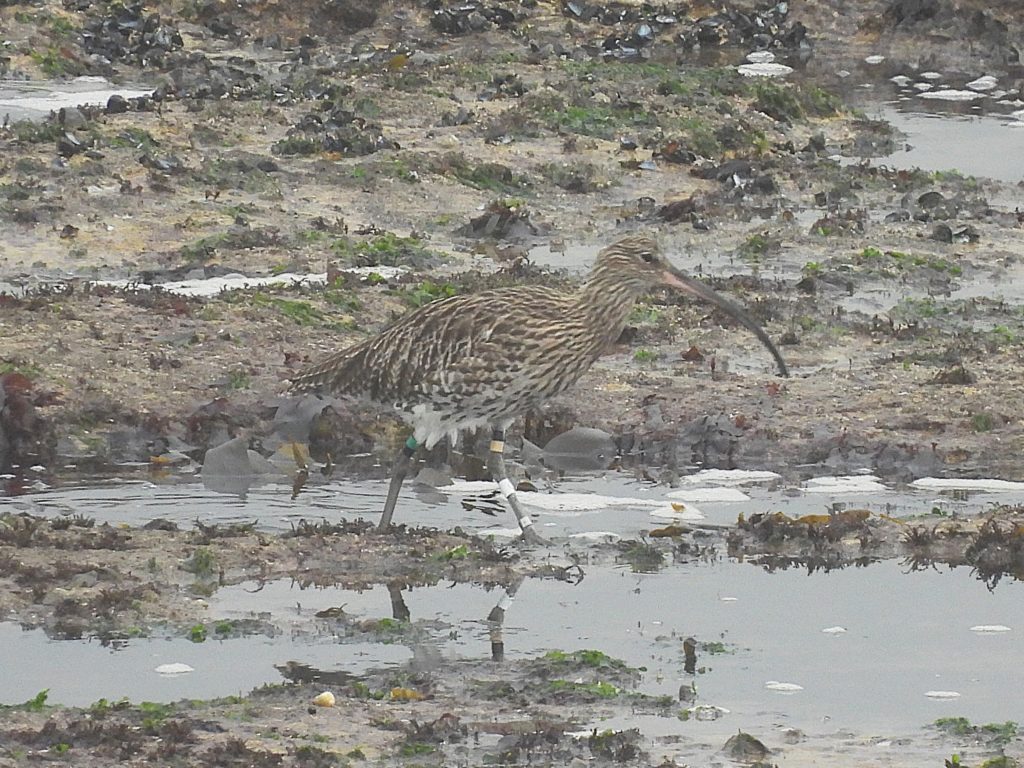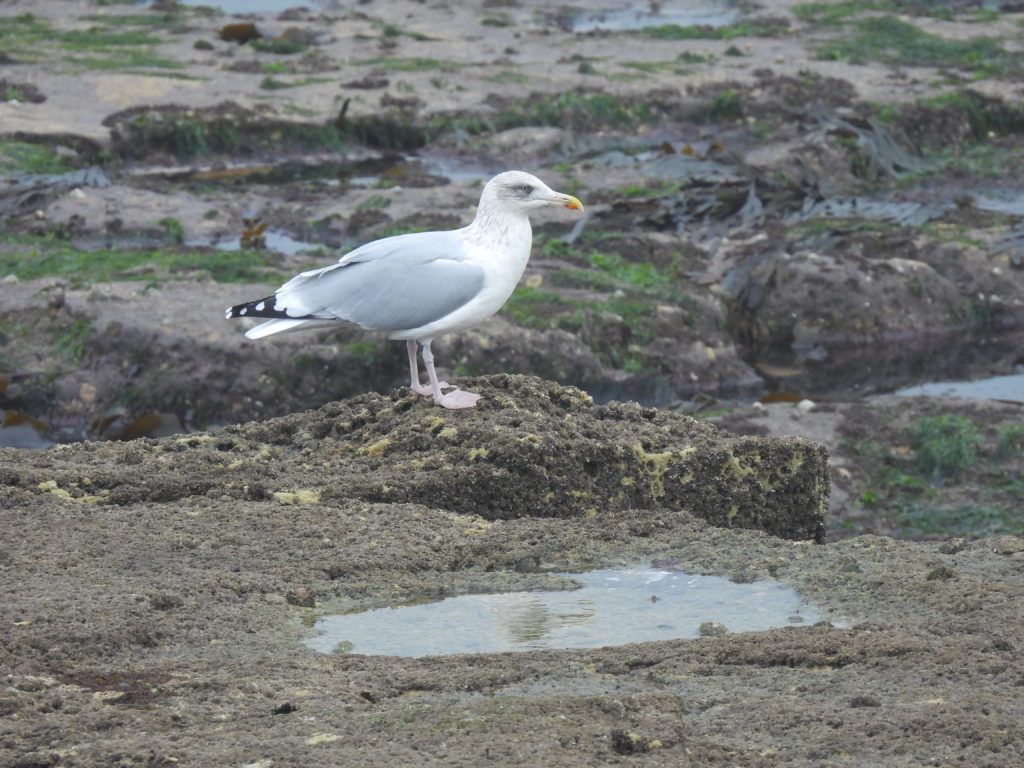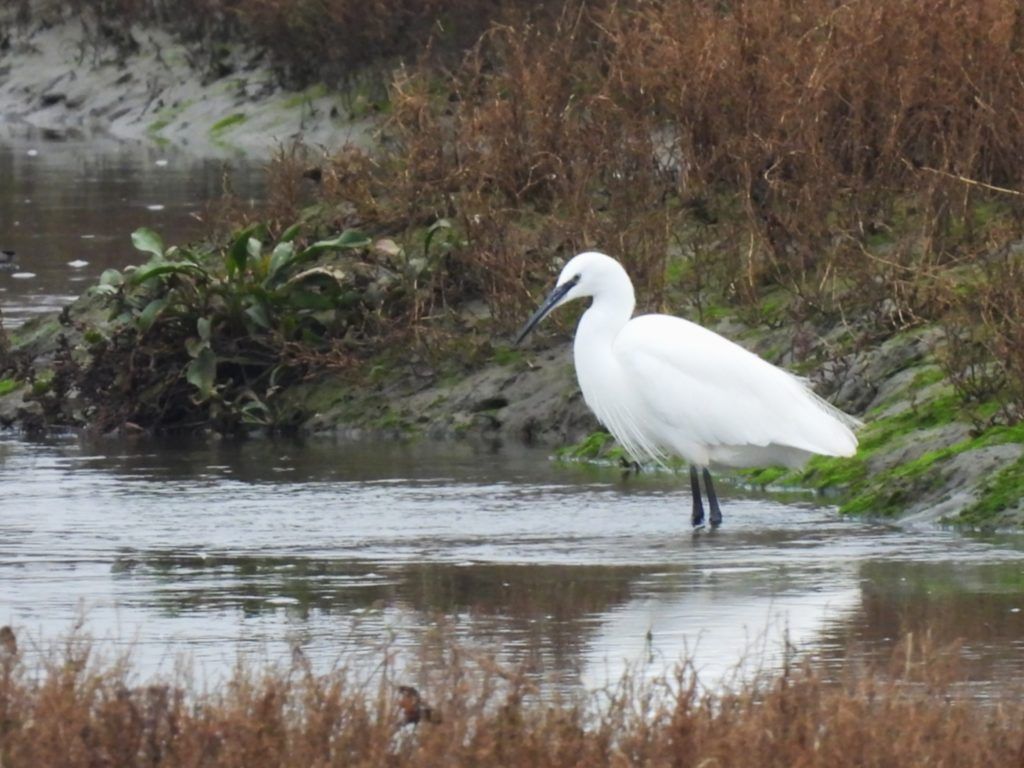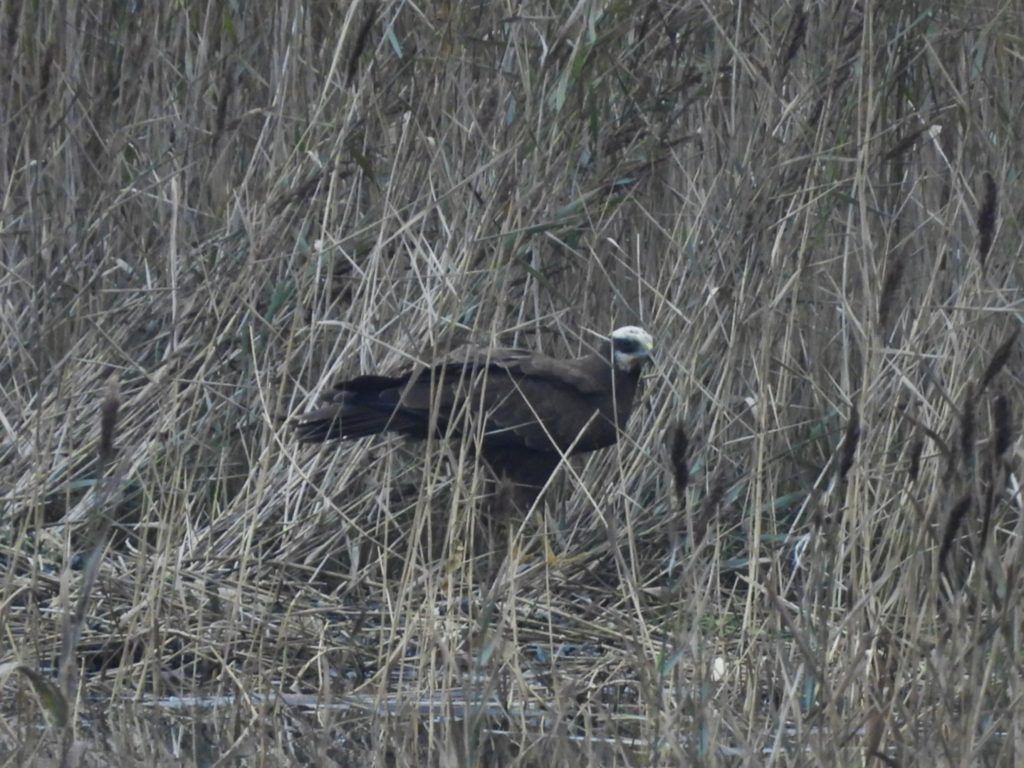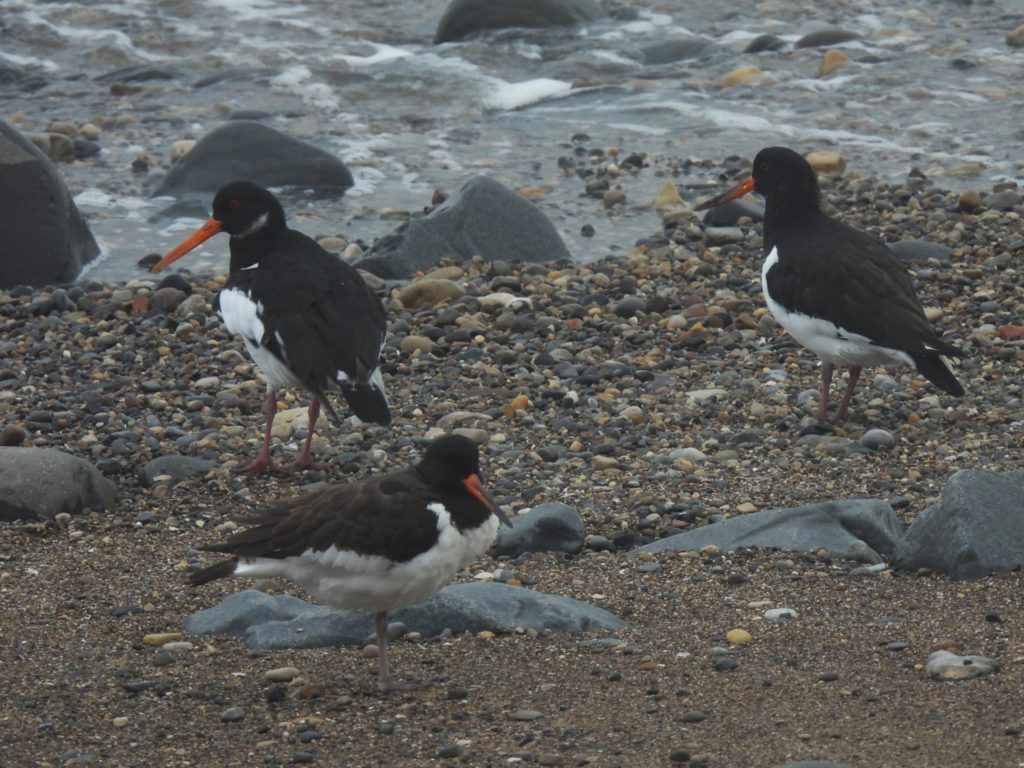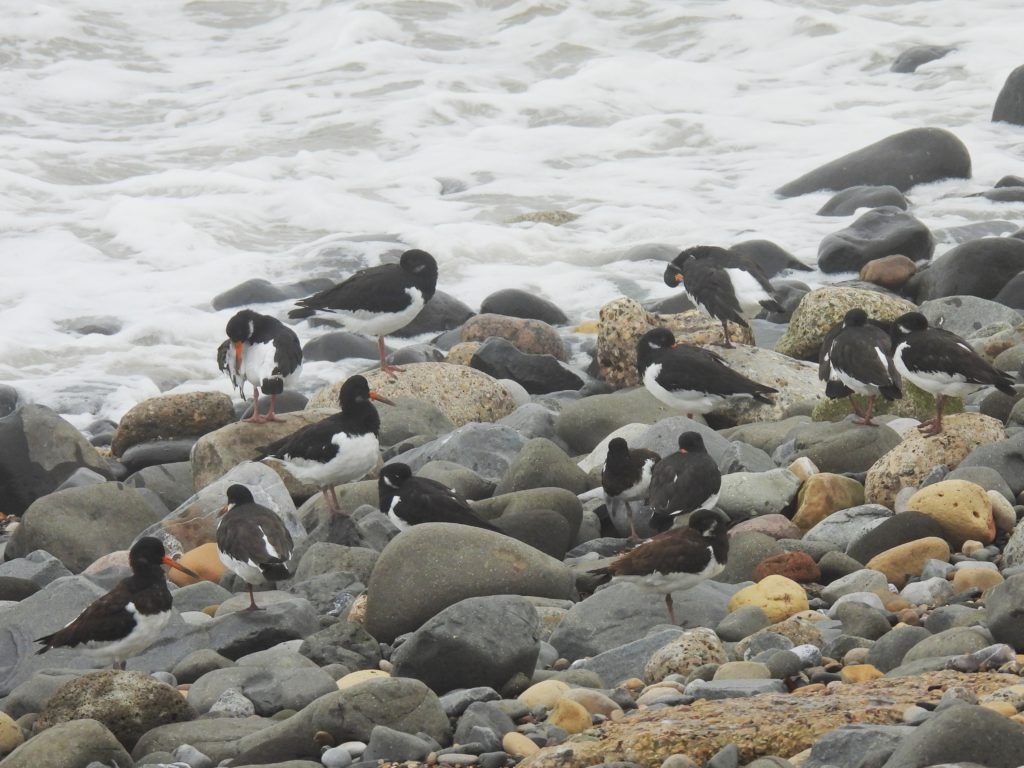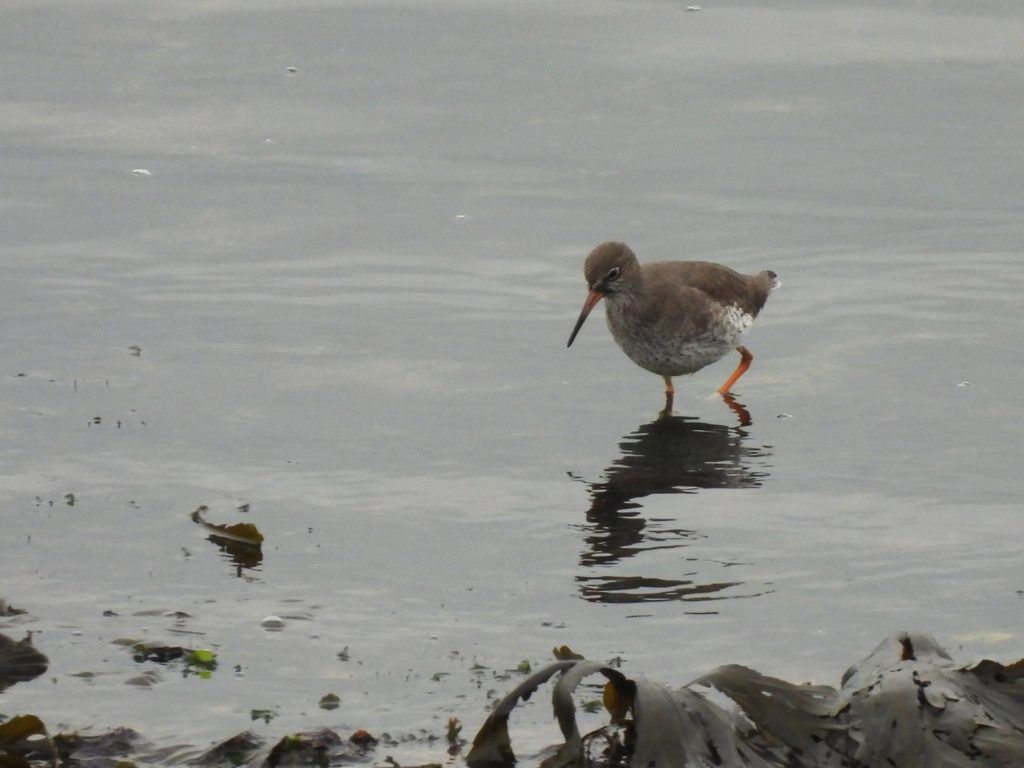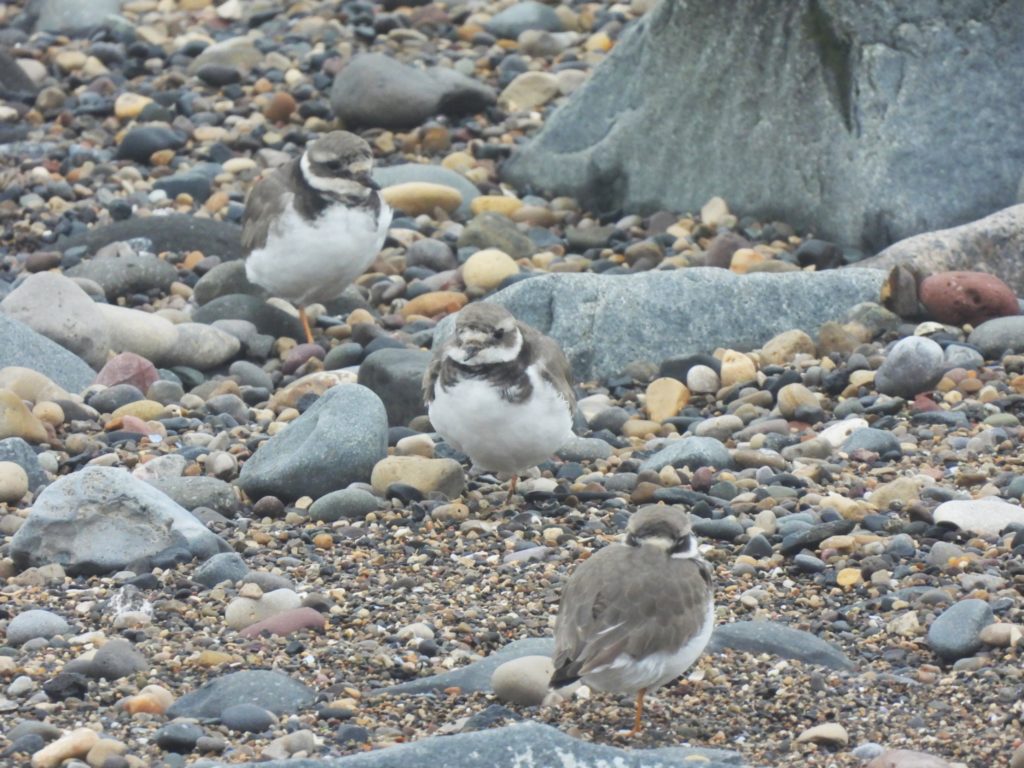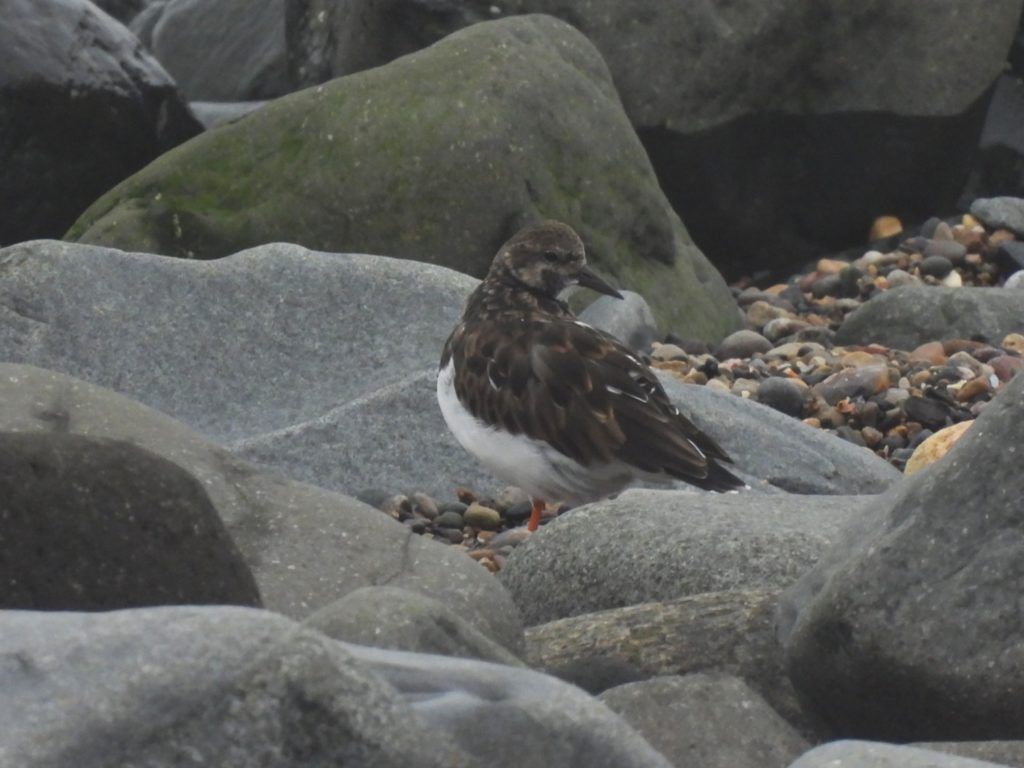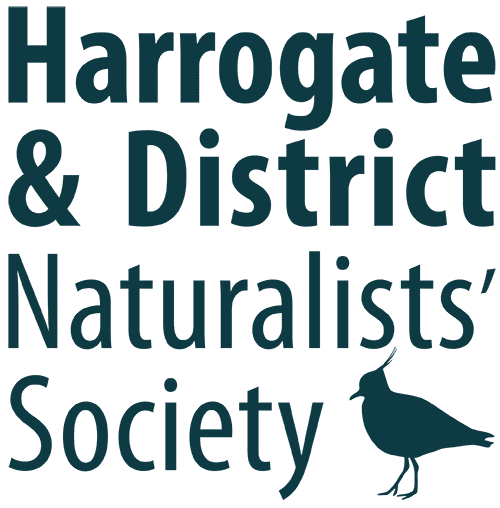Four members attended, starting at the Headland lighthouse. The weather was overcast but remained dry for the day. It was a low tide as we started with an hour’s sea watching. On the sea were three Red-throated Divers, four Great Crested Grebes and a flock of 100 plus Common Scoters drifting North. Flocks of 18 and 25 Scoters flew past to the North low over the sea. Flocks of 30 and 10 Teal and 10 Eider Ducks flew past also. Only one Guillemot was seen flying past. The predominant gulls were Great Black-backed and Herring Gulls with a small number of Black-headed Gulls generally flying back and forth and out to sea. A small number of Gannets were out at sea ranging from juvenile to adult birds. We then walked a short way to the North to check the exposed rocks and found more gulls with at least 55 Great Black-backed loafing, a small number of Turnstones, Oystercatchers, two Redshanks and two Curlews. One of the Curlews had colour rings on its legs. This is a bird I have seen before at Hartlepool in 2021 and 2022. It was ringed at Seal Sands on 21.7.2012. A Bar-tailed Godwit and five Brent Geese flew over the sea heading South.
We retraced our steps past the lighthouse and walked to the Pilot pier and the gardens. In a small patch of bushes on the beach there was a Robin, several House Sparrows and a flighty Blackbird. I wondered if it was a fresh in migrant? We didn’t find many small birds in the gardens but there was a male Brambling and a female Blackcap in a sycamore with several Blue Tits. Three Redwings flew out of the bushes and away. Another birder gave us some information about a Black Redstart which we found at the rugby ground near the Headland car park. It was frequenting the area next to a storage container and across the wall into the Heugh Gun Battery museum.
We then drove to Newburn Bridge for the high tide roost on the beach and have our lunch looking over the sea. On the beach in the roost there were at least 55 Ringed Plovers, 14 Turnstones, 45 Oystercatchers and then three Sanderlings flew in. On the sea there were two Brent Geese and a Great Crested Grebe. The majority of the gulls here were Herring Gulls with a small number of Black-headed.
From here we drove to Greatham Creek at high tide which unfortunately covers all the mud leaving channels on the marsh. We did find three Bar-tailed Godwits and five Black-tailed Godwits resting with some Redshanks. Wildfowl on the marsh included 12 Shelduck, Mallard, Wigeon and Teal. Two Grey Herons were resting on the marsh and three Little Egrets were feeding in the channels. In the distance a Kestrel and a Buzzard were seen perched on posts and two Marsh Harriers flew past.
We then walked across the road to Seal Sands. The pools on the right had eight Dunlin, several Redshanks, Teal, Lapwings, Curlew and a single Snipe. At the last pool on the Long Drag a Water Rail was heard squealing in the reeds and a Snipe was seen. Two Marsh Harriers flew in, one landing in a tree and the other on the edge of the reed bed. From the hide we added a Red-breasted Merganser to our day list. Also on the water there was a Great Crested Grebe and Cormorants.
On our return to the car park we looked over the marsh for Short-eared Owls and did see three hunting in the distance over the far ridge and rough ground. Two more Marsh Harrier sightings finished the meeting here at 17.00hrs. On the drive home we passed the RSPB Saltholme pools next to the road where we spotted a Spoonbill as we drove by.
The total species for the day was 51.
